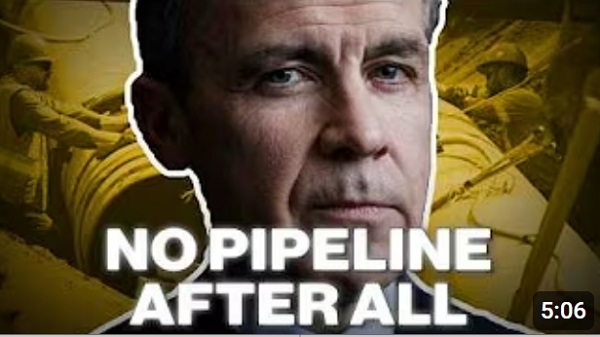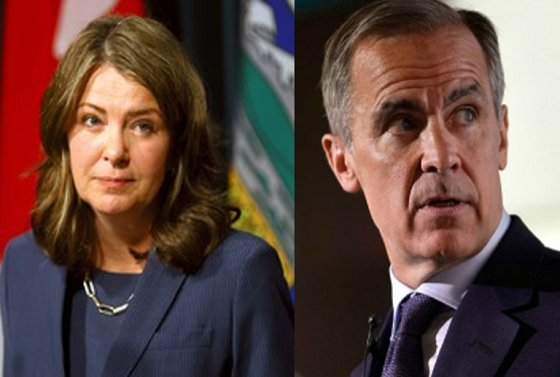Alberta
Alberta Institute – Provincial Election Roundup – Day 2
Submitted by Alberta Institute
Campaign Roundup – Day 2:
- Candidates and volunteers continued knocking on doors and putting up lawn signs in constituencies around the province. Election campaigns take thousands of hours of work from engaged residents. If you want to get involved, find your preferred candidate and offer to lend a hand!
- A new IPSOS poll showed that the UCP has a narrow, 4-point lead over the NDP. Decided and leaning voters favour the UCP by 48% to 44%. The two parties share roughly equal support in Calgary, which is largely considered this election’s battleground.
- Rachel Notley accused Danielle Smith of hiding from the media on account of Smith not holding a press conference today. A little odd, given Smith did hold a press conference just yesterday. Joe Ceci, NDP candidate for Calgary-Buffalo, called it “unprecedented”, but we’re unaware of any precedent of any party’s leader holding press conferences every single day of the campaign.
- Speaking of hiding from the media, we learned that yet another journalist – this time David Staples from the Edmonton Journal – was left off the campaign mailing list for NDP events. The situation was eventually resolved, but as Staples rightly pointed out, cherry-picking which journalists are and are not able to access information is becoming a concerning pattern for the NDP.
- Flair Airlines opened their new Calgary base of operations, which will employ 150 people. Calgary City Councillor Walcott emphasized the importance of cheaper airfares, particularly in a time when people are struggling with affordability, while Danielle Smith highlighted the UCP’s recent business tax cuts and campaign promise to not raise business taxes as contributing to business confidence in Alberta.
- Rachel Notley, meanwhile, promised healthcare improvements, including new health teams that would see a family physician work alongside specialists like therapists, dietitians, physiotherapists, and midwives. She pledged $350 million to establish 50 family health clinics and $400 million for hiring 4,000 allied health professionals.
- The UCP released a new television ad highlighting affordability issues. The ad reiterates yesterday’s promise to lower income taxes for Albertans and extend the fuel tax holiday.
Support Our Work:
The Alberta Institute doesn’t accept any government funding and never will. We think you should be free to choose, for yourself, which organizations to support. If you’re in a position to contribute financially, you can make a donation here:
If you’re not in a position to donate, we understand, but if you appreciate our work, you can help by spreading our message. Please forward this email to your friends, follow us on Facebook and Twitter, and help make sure every Albertan knows what’s going on in our province.
Alberta
They never wanted a pipeline! – Deputy Conservative Leader Melissa Lantsman

From Melissa Lantsman
Turns out the anti-development wing of the Liberal Party never stopped running the show.
Today, we’ll see if the Liberals vote for the pipeline they just finished bragging about.
Spoiler: they won’t. Because with the Liberals, the announcements are real, but the results never are.
Alberta
Premier Smith: Canadians support agreement between Alberta and Ottawa and the major economic opportunities it could unlock for the benefit of all

From Energy Now
By Premier Danielle Smith
Get the Latest Canadian Focused Energy News Delivered to You! It’s FREE: Quick Sign-Up Here
If Canada wants to lead global energy security efforts, build out sovereign AI infrastructure, increase funding to social programs and national defence and expand trade to new markets, we must unleash the full potential of our vast natural resources and embrace our role as a global energy superpower.
The Alberta-Ottawa Energy agreement is the first step in accomplishing all of these critical objectives.
Recent polling shows that a majority of Canadians are supportive of this agreement and the major economic opportunities it could unlock for the benefit of all Canadians.
As a nation we must embrace two important realities: First, global demand for oil is increasing and second, Canada needs to generate more revenue to address its fiscal challenges.
Nations around the world — including Korea, Japan, India, Taiwan and China in Asia as well as various European nations — continue to ask for Canadian energy. We are perfectly positioned to meet those needs and lead global energy security efforts.
Our heavy oil is not only abundant, it’s responsibly developed, geopolitically stable and backed by decades of proven supply.
If we want to pay down our debt, increase funding to social programs and meet our NATO defence spending commitments, then we need to generate more revenue. And the best way to do so is to leverage our vast natural resources.
At today’s prices, Alberta’s proven oil and gas reserves represent trillions in value.
It’s not just a number; it’s a generational opportunity for Alberta and Canada to secure prosperity and invest in the future of our communities. But to unlock the full potential of this resource, we need the infrastructure to match our ambition.
There is one nation-building project that stands above all others in its ability to deliver economic benefits to Canada — a new bitumen pipeline to Asian markets.
The energy agreement signed on Nov. 27 includes a clear path to the construction of a one-million-plus barrel-per-day bitumen pipeline, with Indigenous co-ownership, that can ensure our province and country are no longer dependent on just one customer to buy our most valuable resource.
Indigenous co-ownership also provide millions in revenue to communities along the route of the project to the northwest coast, contributing toward long-lasting prosperity for their people.
The agreement also recognizes that we can increase oil and gas production while reducing our emissions.
The removal of the oil and gas emissions cap will allow our energy producers to grow and thrive again and the suspension of the federal net-zero power regulations in Alberta will open to doors to major AI data-centre investment.
It also means that Alberta will be a world leader in the development and implementation of emissions-reduction infrastructure — particularly in carbon capture utilization and storage.
The agreement will see Alberta work together with our federal partners and the Pathways companies to commence and complete the world’s largest carbon capture, utilization and storage infrastructure project.
This would make Alberta heavy oil the lowest intensity barrel on the market and displace millions of barrels of heavier-emitting fuels around the globe.
We’re sending a clear message to investors across the world: Alberta and Canada are leaders, not just in oil and gas, but in the innovation and technologies that are cutting per barrel emissions even as we ramp up production.
Where we are going — and where we intend to go with more frequency — is east, west, north and south, across oceans and around the globe. We have the energy other countries need, and will continue to need, for decades to come.
However, this agreement is just the first step in this journey. There is much hard work ahead of us. Trust must be built and earned in this partnership as we move through the next steps of this process.
But it’s very encouraging that Prime Minister Mark Carney has made it clear he is willing to work with Alberta’s government to accomplish our shared goal of making Canada an energy superpower.
That is something we have not seen from a Canadian prime minister in more than a decade.
Together, in good faith, Alberta and Ottawa have taken the first step towards making Canada a global energy superpower for benefit of all Canadians.
Danielle Smith is the Premier of Alberta
-

 COVID-192 days ago
COVID-192 days agoUniversity of Colorado will pay $10 million to staff, students for trying to force them to take COVID shots
-

 Bruce Dowbiggin2 days ago
Bruce Dowbiggin2 days agoIntegration Or Indignation: Whose Strategy Worked Best Against Trump?
-

 espionage2 days ago
espionage2 days agoWestern Campuses Help Build China’s Digital Dragnet With U.S. Tax Funds, Study Warns
-

 Bruce Dowbiggin2 days ago
Bruce Dowbiggin2 days agoWayne Gretzky’s Terrible, Awful Week.. And Soccer/ Football.
-

 Agriculture2 days ago
Agriculture2 days agoCanada’s air quality among the best in the world
-

 Business1 day ago
Business1 day agoCanada invests $34 million in Chinese drones now considered to be ‘high security risks’
-

 Great Reset1 day ago
Great Reset1 day agoSurgery Denied. Death Approved.
-

 Health1 day ago
Health1 day agoCDC Vaccine Panel Votes to End Universal Hep B Vaccine for Newborns






